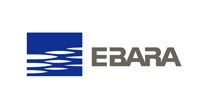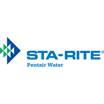Surprisingly, most people do not give much thought to water pressure. It is one of those crucial things people take for granted. Poor pressure will result in low water flow in one or more fixtures, hindering daily tasks like washing dishes or showering. In such cases, opting for a New York City Water Booster Pumps is best.
New York City Variable Booster Pumps
If the water pressure is inadequate to meet the necessary flow rate for plumbing fixtures, consider installing a water booster pump. New York City water booster pumps boost the pressure in a water system. They may be end suction, in-line, split case, or multi-stage turbine pumps. They are used in applications where the normal water pressure is low.
New York City water booster pumps are designed to increase water pressure in municipal, well water, rainwater, and irrigation applications. Keep in mind that the characteristics of a building determine the need for a booster pump. This is because the minimum water pressure and flow values are specified at fixture outlets.
Using a single pump for more than one building is not suggested by the NYC Plumbing Code, except in areas with multiple buildings with a common owner. Also, an individual water consumer can’t supply pressurized water to other buildings.
New York City variable booster pumps are usually located near the water source. This is because the water main enters the building and typically requires a storage pressure to perform the following three main functions:
- Providing additional water storage
- Prolonging the life of the water booster pump system
- Managing water under pressure for delivery between pump cycles
Please note that water pumps generally fail due to rapid cycling. Therefore, New York City variable booster pumps incorporate Variable Frequency Drives (VFD), lowering energy costs and wear and tear on the pumps. The top features of New York City water booster pumps include:
- These pumps are always multi-stage pumps and have more than one impeller.
- They are used to boost water pressure from the source to the required system.
- They allow the build-up of additional pressure required to move water.
Choosing the Right New York City Water Booster Pumps
There are different types of water pressure pumps. The first is with a pressure switch and vessel, the second is with an electronic controller, and the last is with a speed controller. The model you opt for depends on your requirements.
You can choose a water pressure pump with a pressure switch and vessel for a specific water buffer. The pressure vessel could hold 20 liters as standard, and larger and smaller vessels are also available.
Water booster pumps and fire sprinkler pumps in New York are typically electrically powered and use centrifugal pump technology. They use a motor that drives the pump, which boosts the water pressure by imparting kinetic energy to it.
These pumps are installed at various locations, including pump stations, reservoirs, and water towers. Their specifications and locations vary depending on the requirements of each area.
Checking Before You Install New York City Water Booster Pumps
Remember that poor water pressure at plumbing fixture outlets has many possible causes. Thus, do not immediately assume that the main water supply is to blame. Before you choose to install a water booster pump, ensure that your problem is not due to one of these causes:
- Clogged water pipes causing a drastic pressure drop
- Older plumbing fixtures and installations
- A partially closed shut-off valve
- Undersized water pipes
In any of these scenarios, a booster pump is simply a waste of money. Excessive water pressure can damage your installation. So before proceeding, check everything that can cause a drop in water pressure. Get a professional assessment to verify that there are no piping issues.
Looking for New York City Water Booster Pumps?
For more than 14 years, Callaghan Pump has been providing high-quality water booster pumps in NYC from various leading pump brands. Whether you need variable booster pumps or fire sprinkler pumps in New York, we are here for you to make it simple. Contact us for more information on New York City Variable Booster Pumps.













